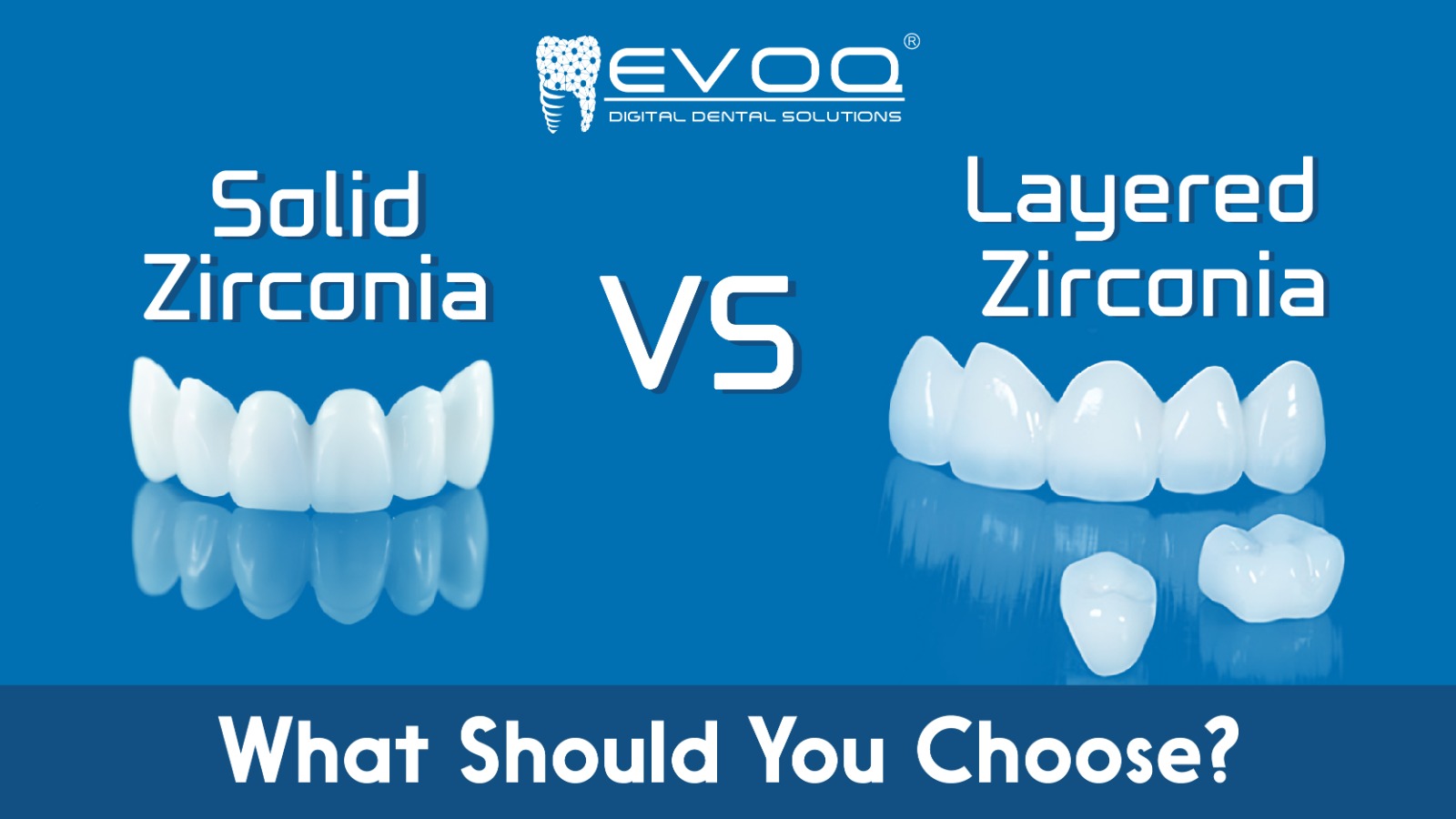
Zirconia has quickly become one of the most popular materials for dental restorations, particularly crowns, thanks to its incredible durability and aesthetic potential. However, with advancements in zirconia-based restorations, dental professionals now have the choice between two main types of zirconia crowns: solid zirconia (also known as monolithic zirconia) and layered zirconia. Understanding the key differences between these two types can help dentists make informed decisions that best suit their patients’ needs. In this blog, we’ll explore the characteristics of solid and layered zirconia, and the situations where each is most appropriate.
Solid Zirconia
Solid zirconia, also called monolithic zirconia, is renowned for its strength and durability. This material is less translucent than layered zirconia, giving it a more opaque appearance. While this might make it less ideal for front teeth where aesthetics are crucial, its robust nature makes it the perfect solution for posterior crowns.
Key Advantages of Solid Zirconia:
-
Durability and Strength
Solid zirconia crowns are incredibly strong due to their composition. They contain more stabilizers than their high-translucent counterparts, which allows them to withstand the intense chewing forces exerted by the molars. This strength also makes them an ideal option for patients who grind or clench their teeth, as they are much less prone to cracking or chipping under pressure.
-
Minimal Clearance Required
One of the standout benefits of solid zirconia is that it requires minimal tooth reduction during preparation. This makes it an excellent choice for patients with less space in the posterior region, allowing for a more conservative approach to tooth preservation.
-
Low Wear on Opposing Teeth
Unlike some other dental materials, solid zirconia has a low abrasiveness, meaning it causes minimal wear on opposing teeth. This is crucial for maintaining the long-term health of the surrounding dentition, especially in the back of the mouth where heavy occlusal forces are present.
-
Effective for Masking Discolored Dental Preps
Solid zirconia is highly effective at masking dark or discolored dental preparations, including teeth that have undergone previous treatments such as a post and core or implant-supported restoration. Its opacity is a major advantage in these situations, as it hides underlying imperfections and provides a clean, consistent appearance.
When to Use Solid Zirconia
Solid zirconia is the material of choice for posterior restorations, particularly in patients who require extra durability or have specific concerns like tooth grinding. It is an excellent option for those who need crowns that prioritize function over aesthetics. Moreover, it is perfect for covering highly discolored teeth, ensuring a neat finish without compromising the structural integrity of the restoration.
Layered Zirconia
Layered zirconia, on the other hand, is designed with aesthetics in mind. This material has higher translucency and opalescence closely mimicking the appearance of natural teeth. As a result, layered zirconia is often the preferred choice for anterior crowns, where a more natural look is essential.
Key Advantages of Layered Zirconia:
-
Superior Aesthetics
Layered zirconia offers exceptional visual appeal, thanks to its translucency and ability to mimic the light-reflecting properties of natural enamel. This makes it ideal for use in the front teeth, where patients prioritize appearance and want a restoration that seamlessly blends with their smile.
-
Versatility
While layered zirconia is often associated with anterior crowns, it can also be used for posterior restorations when there is enough clearance available. Its flexibility allows for high-quality restorations across different areas of the mouth, though it’s most frequently used where aesthetics are the primary concern.
-
Natural-Looking Opalescence
The opalescent quality of layered zirconia allows it to imitate the natural color and translucency of enamel. This is particularly important for patients who have visible restorations in their smile zone. With skilled craftsmanship, layered zirconia crowns can be nearly indistinguishable from real teeth.
When to Use Layered Zirconia
Layered zirconia is the go-to choice for anterior restorations, where aesthetics matter most. It can also be used in posterior regions if enough space is available for proper placement. Dentists should opt for layered zirconia when their patients are focused on achieving a beautiful, natural-looking smile, especially in the front teeth.
Solid vs. Layered Zirconia: Which Should You Choose?
Both solid and layered zirconia offer distinct advantages that make them excellent options for dental restorations. Solid zirconia is the better choice when strength and durability are top priorities, making it ideal for posterior teeth, patients with bruxism, or cases involving discolored dental preparations. Layered zirconia, on the other hand, should be used when aesthetics are the main concern, particularly in anterior teeth, where achieving a natural-looking restoration is critical.
Conclusion
In conclusion, the choice between solid and layered zirconia depends on the specific needs of each patient. Understanding the strengths of each material ensures that, as a dental professional, you can provide tailored solutions that deliver optimal results. Whether your patient prioritizes durability or aesthetics, Evoq Digital Dental Lab offers zirconia crowns designed to meet both functional and visual expectations. By selecting the right zirconia option, you can help your patients enjoy long-lasting, beautiful smiles.
